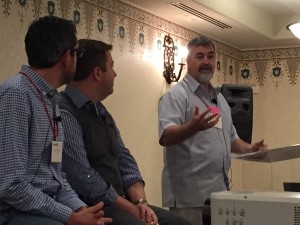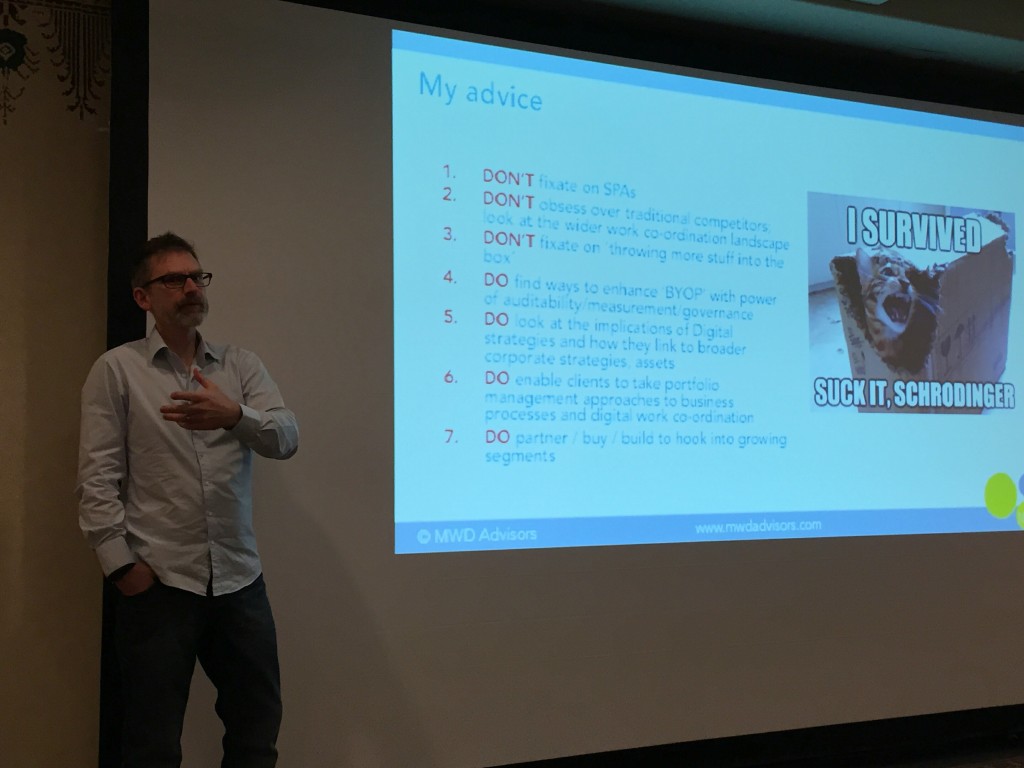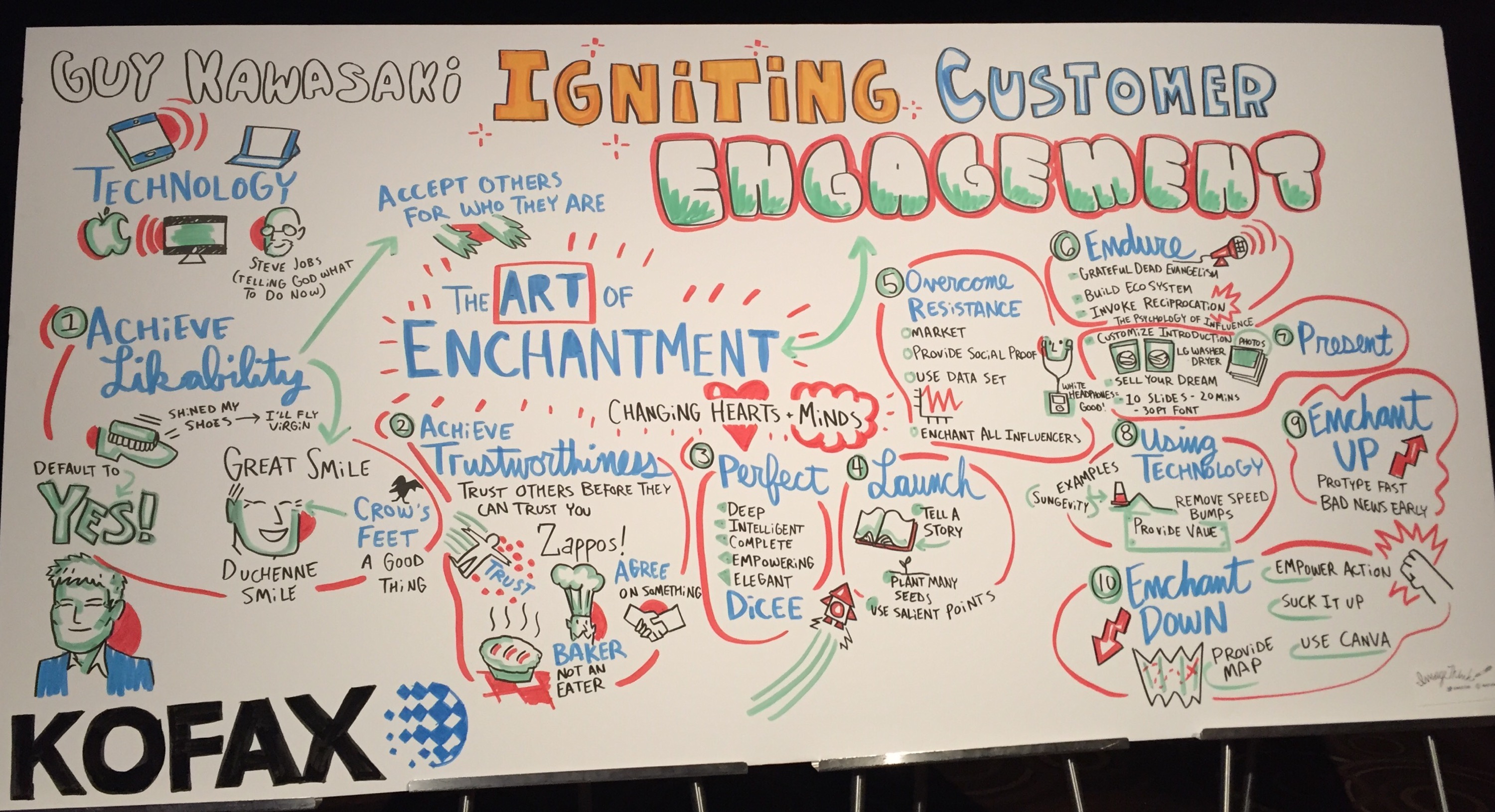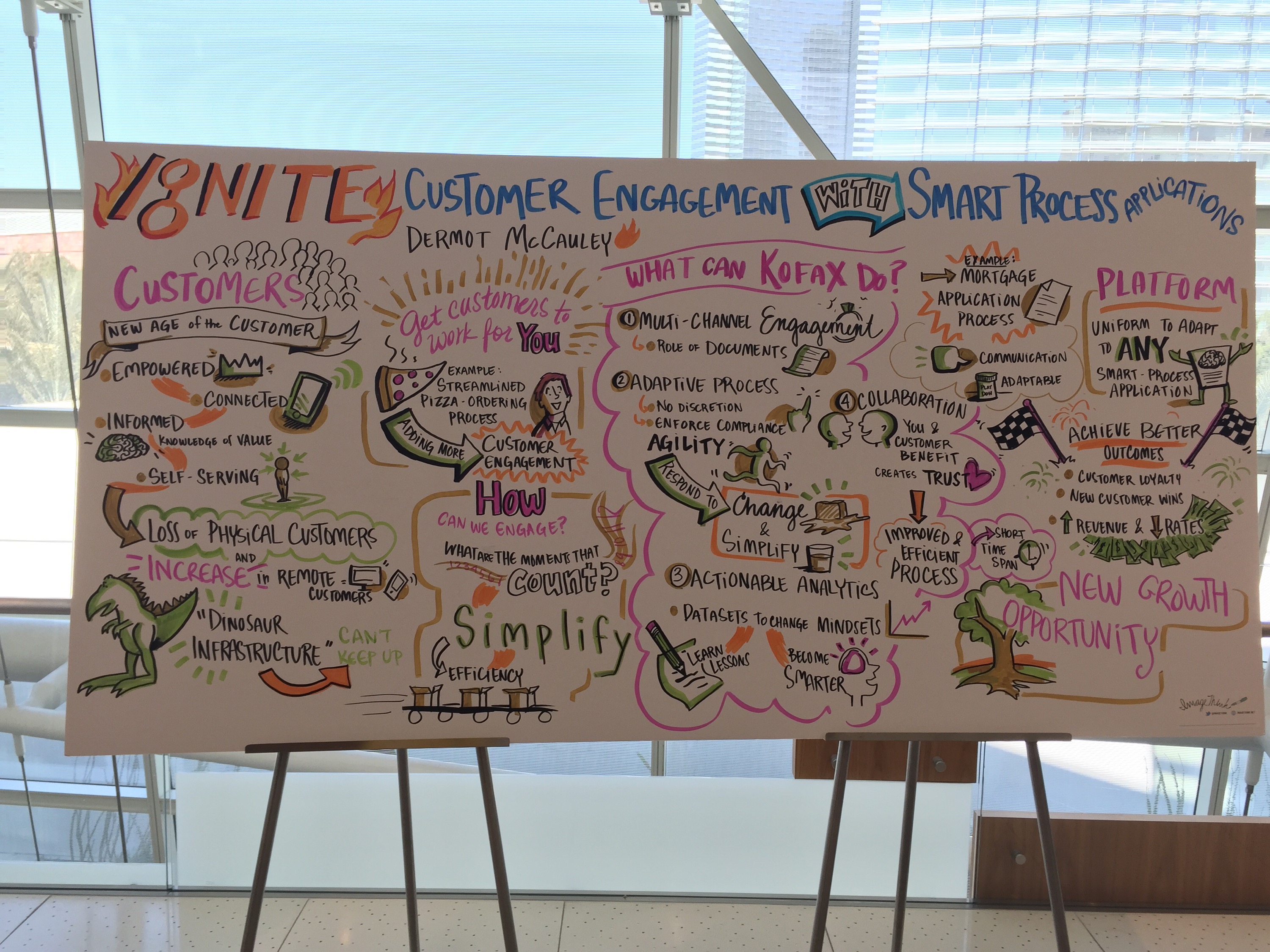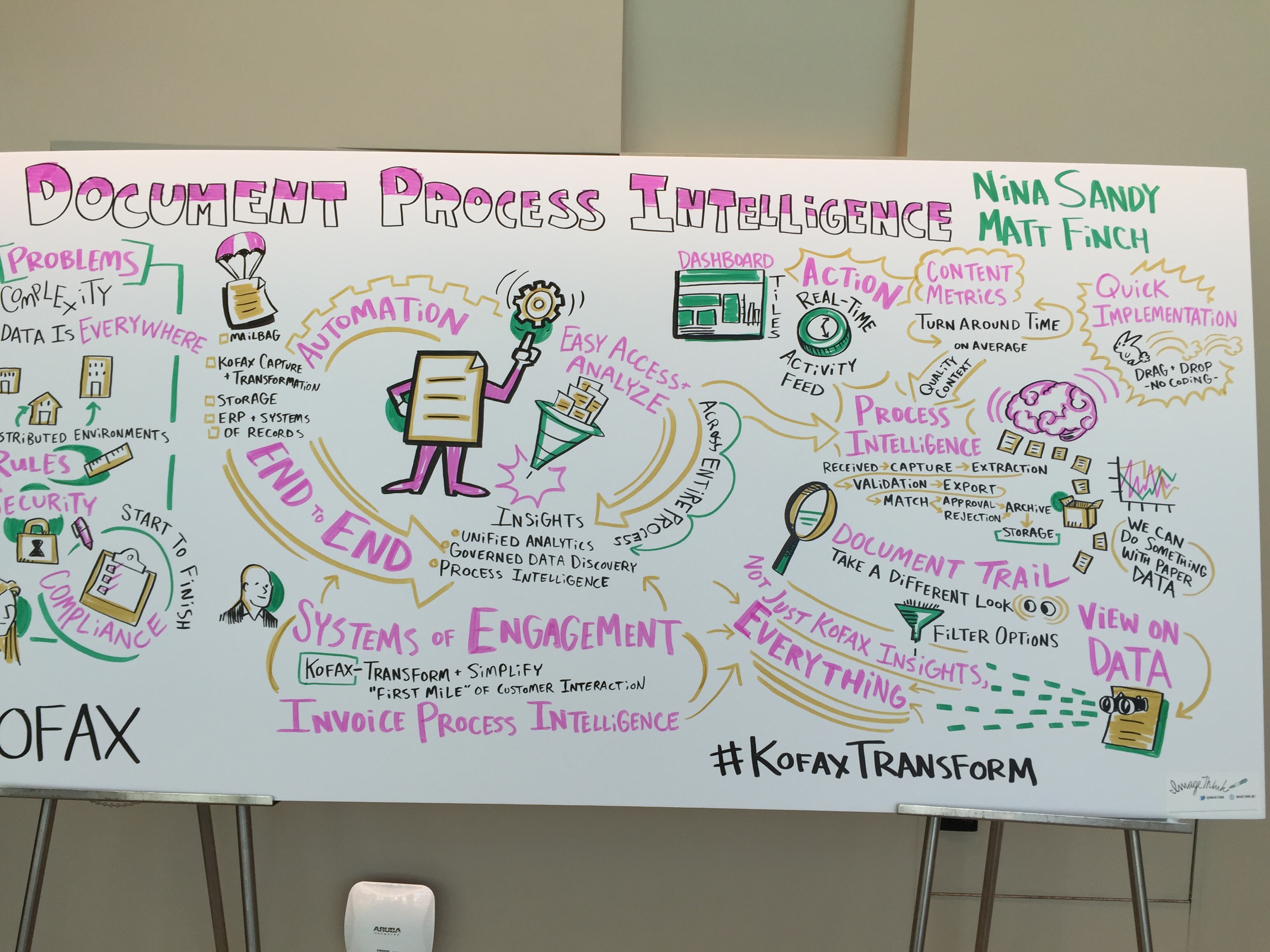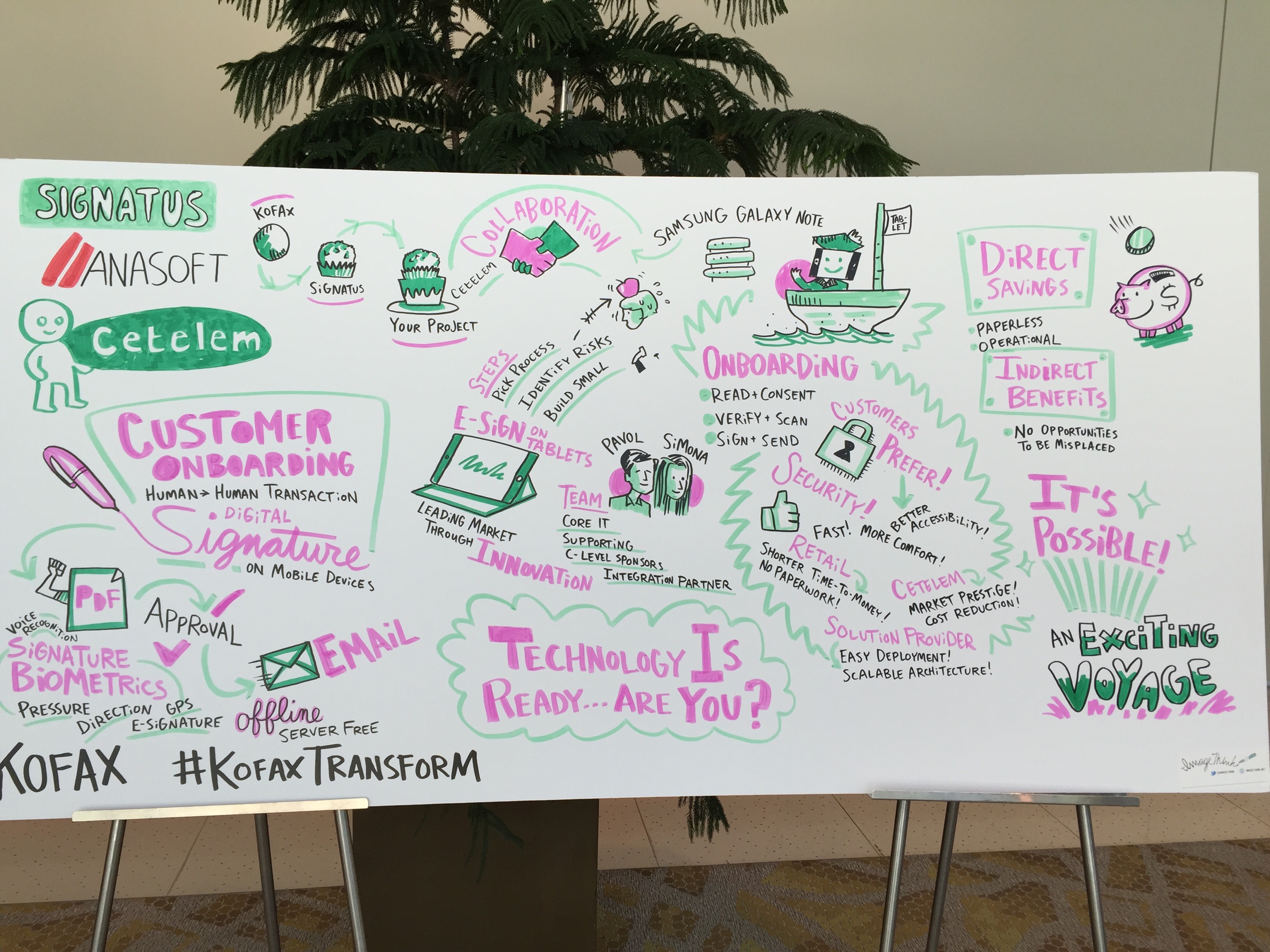We finished the morning demo sessions with two on the theme of decision modeling and management.
Sapiens: How to Manage Business Logic
Michael Grohs highlighted the OMG release of the Decision Model and Notation (DMN) standard, and how the decision model is really a business logic model. However, business rule management systems are typically technical solutions, and don’t do much for business users and analysts trying to model their decision logic and rules based on their policies and procedures. Decision-aware processes extract declarative knowledge from process models, greatly simplifying the process models and moving the declarative information to a model format more suitable to business logic, such as a decision table. BPMS and DMS are complementary, and can be combined to create a complete model of the business process. He provided a demo of their decision modeling and repository tooling, which starts with the definition of a community space that shares a glossary, attributes and models, and has governance workflows for decision model approval and deployment. The glossary allows for the definition of fact types, including multiple synonyms to allow different stakeholders to use their own terminology. The decision models are made up of rule families that capture the business logic, with a visual syntax that indicates the rules and conditions that make up a particular decision. This can be expanded into a full decision table style that shows the if-then-else logic using the business terms. Different instances of decisions and rules sets can be created — in his demo example, the insurance policy renewals base logic versus that for a hurricane-prone state such as Florida — and visually compared in the graphical or tabular view, with changes highlighted or listed in detail in a report. Rule sets can be validated to highlight conflicts and missing information, then exported in a variety of formats for importing into a DMS for execution.
Signavio: Business Decision Management
Gero Decker talked about their collaborative process design and SAP upgrade tools as an introduction, but mainly addressed decision modeling and how they are embracing the DMN standard: modeling decisions, inputs and knowledge sources, then linking that to a decision activity in a BPMN model. DMN provides a graphical model form, and also allows for decision tables for detailed steps. Like Sapiens, Signavio does only decision modeling, not execution, and exports in standard formats for importing to a DMN such as Drools for execution. They are releasing the Signavio Decision Manager in a few weeks, and he gave us a preview demo of modeling and testing rules integrated with their process modeling environment. Similar to the modeling that we saw from Comindware earlier this morning, Signavio can be used to model higher-level enterprise architecture constructs such as value chains plus full BPMN models for specific capabilities within those models; he used a BPMN model as a jumping-off point for demonstrating decision modeling by creating a business rule task. From that point, you can specify a decision table directly in situ, or choose to create a DMN model at that point, which launches the DMN modeler with the top-level question/answer in the DMN model linked to the business rule activity from the BPMN model. The DMN model can be built out graphically, data objects defined and rules added with decision tables, and sub-decisions added as required. The DMN modeler can make use of the existing glossary in the Signavio environment for data objects and attributes. The decision tables can be validated to detect conflicts, and can export test cases in a spreadsheet format to drive manual or automated testing. They are also doing some work on detecting complex decision logic within BPMN models, with the goal to refactor the models to externalize the decision logic into DMN models where it makes the BPMN model unnecessarily complex.


